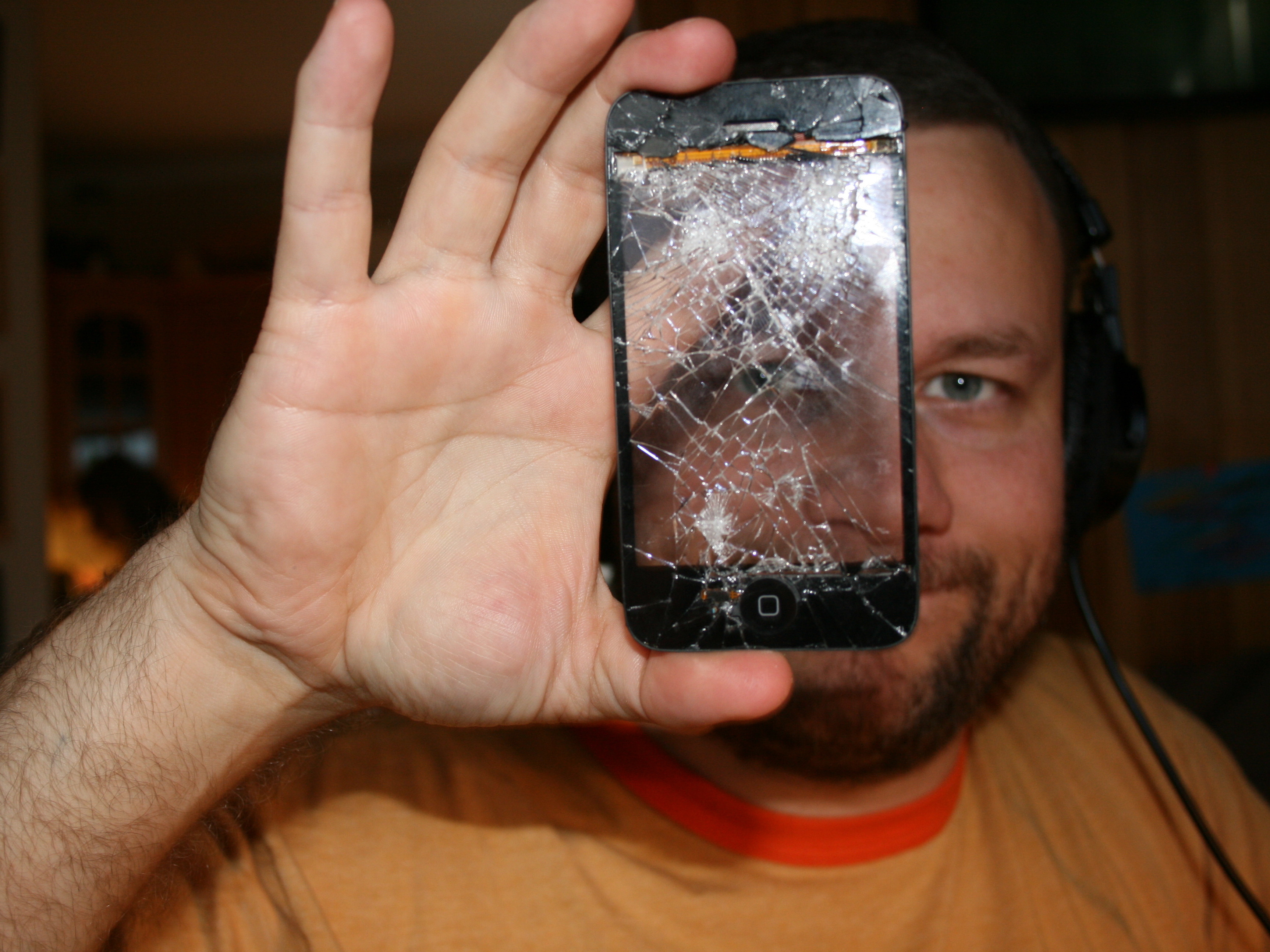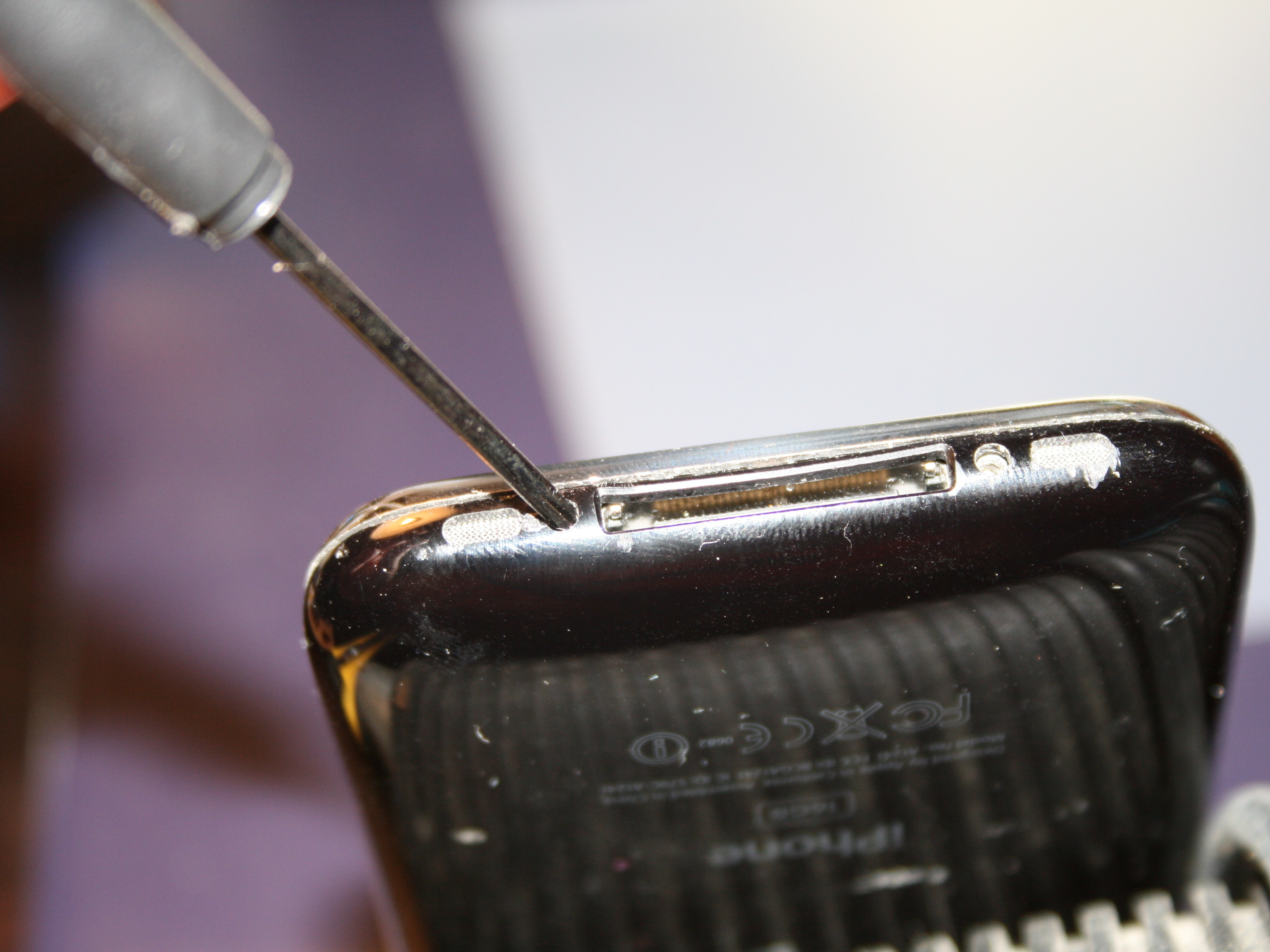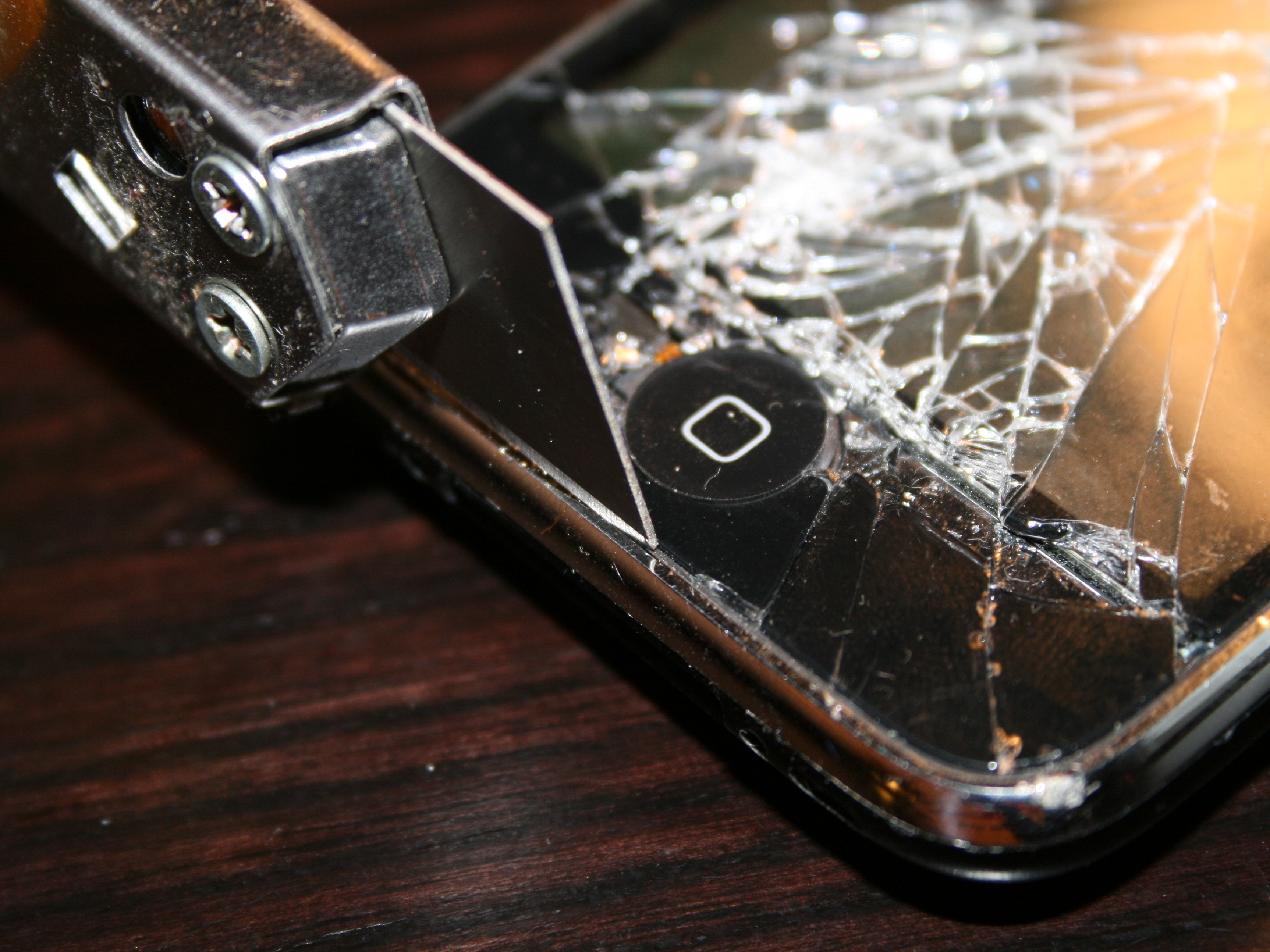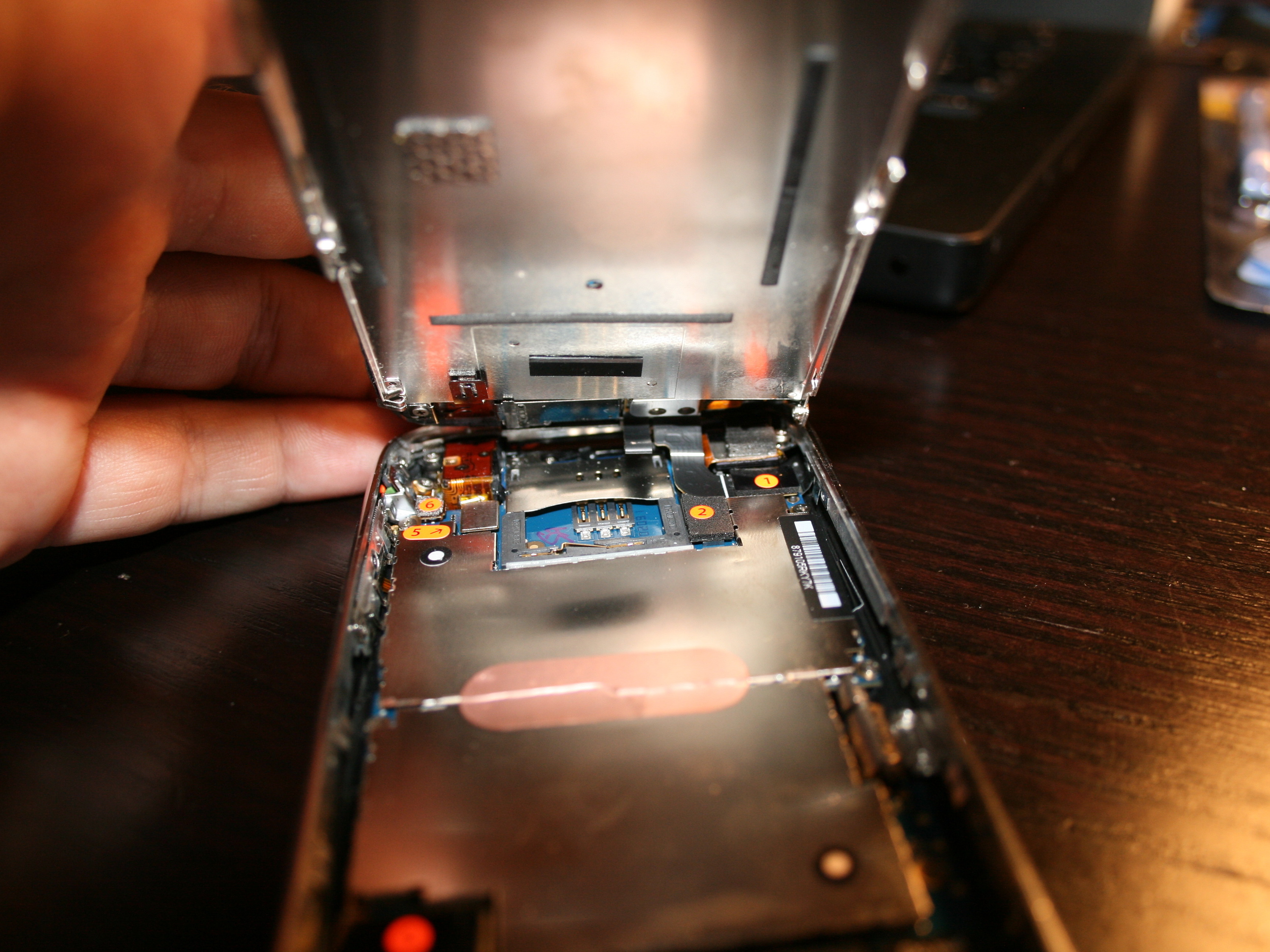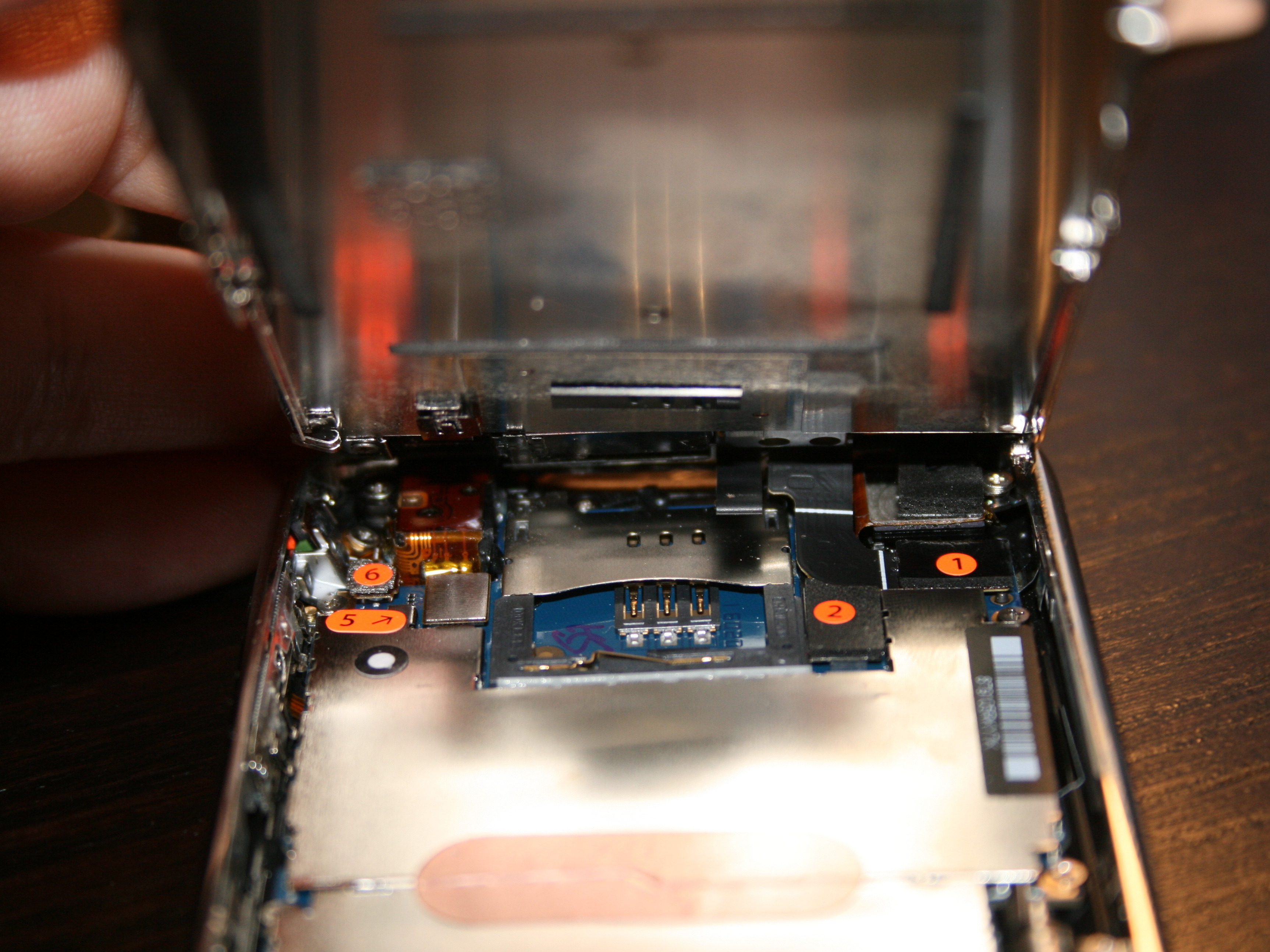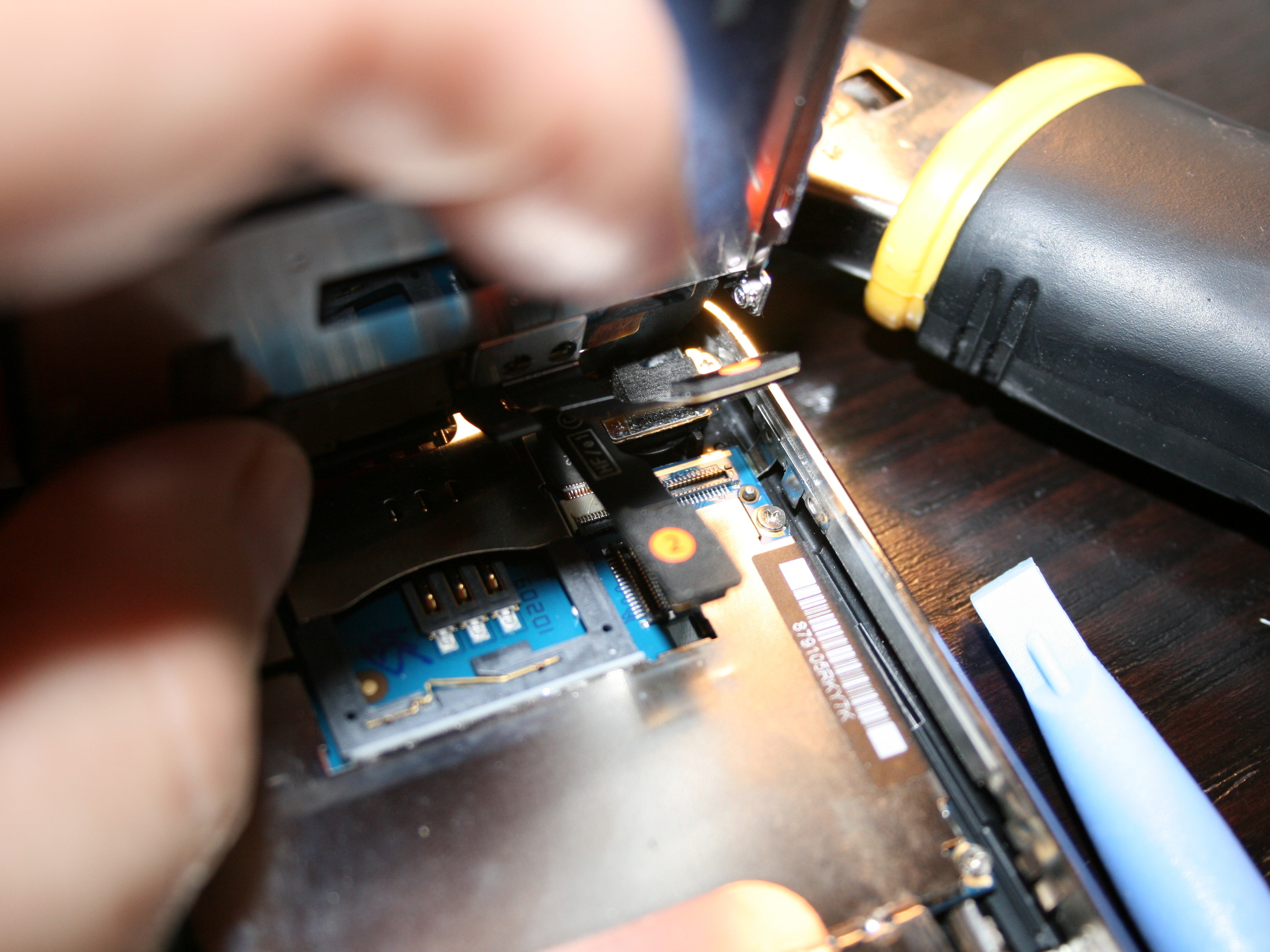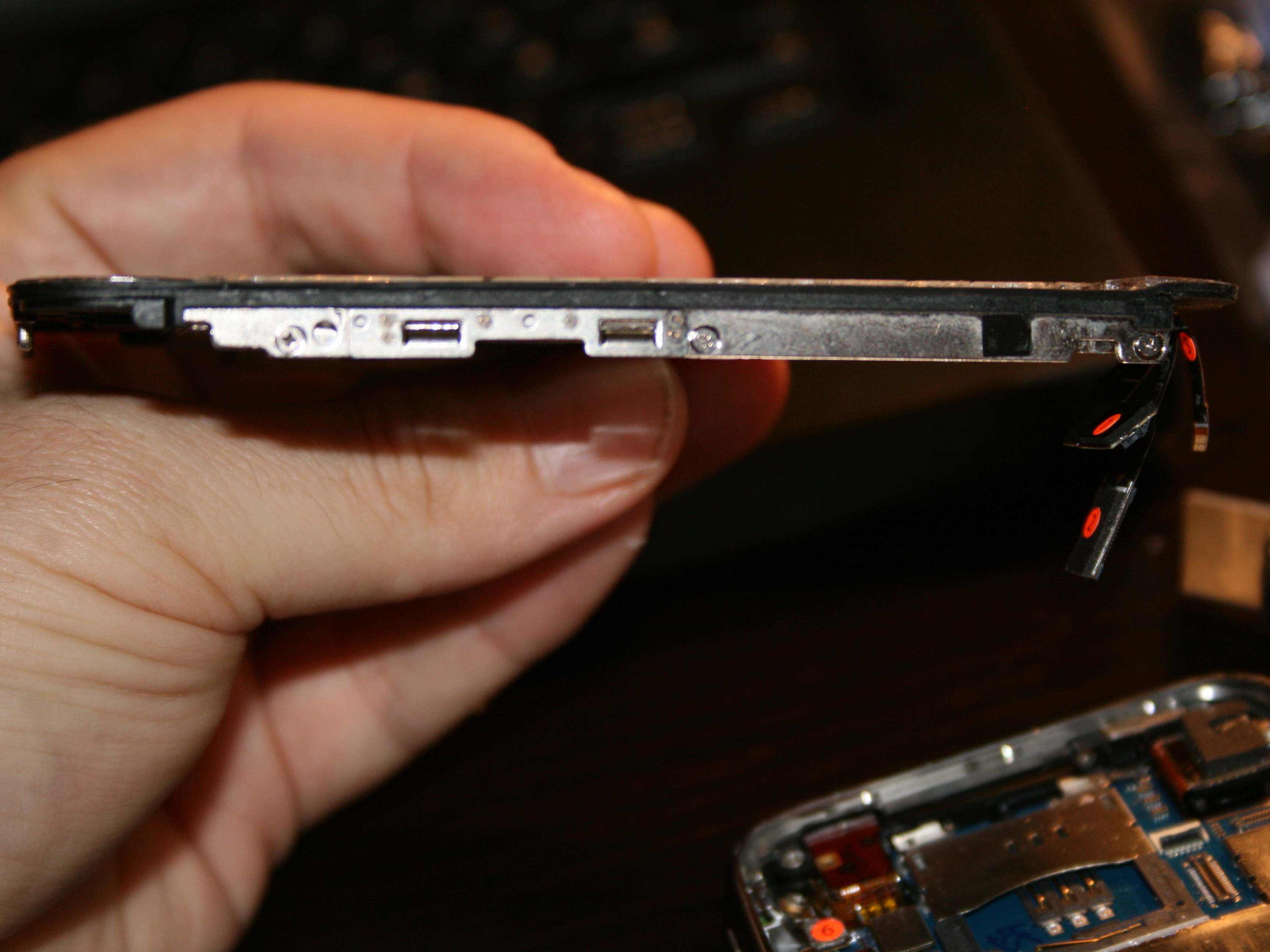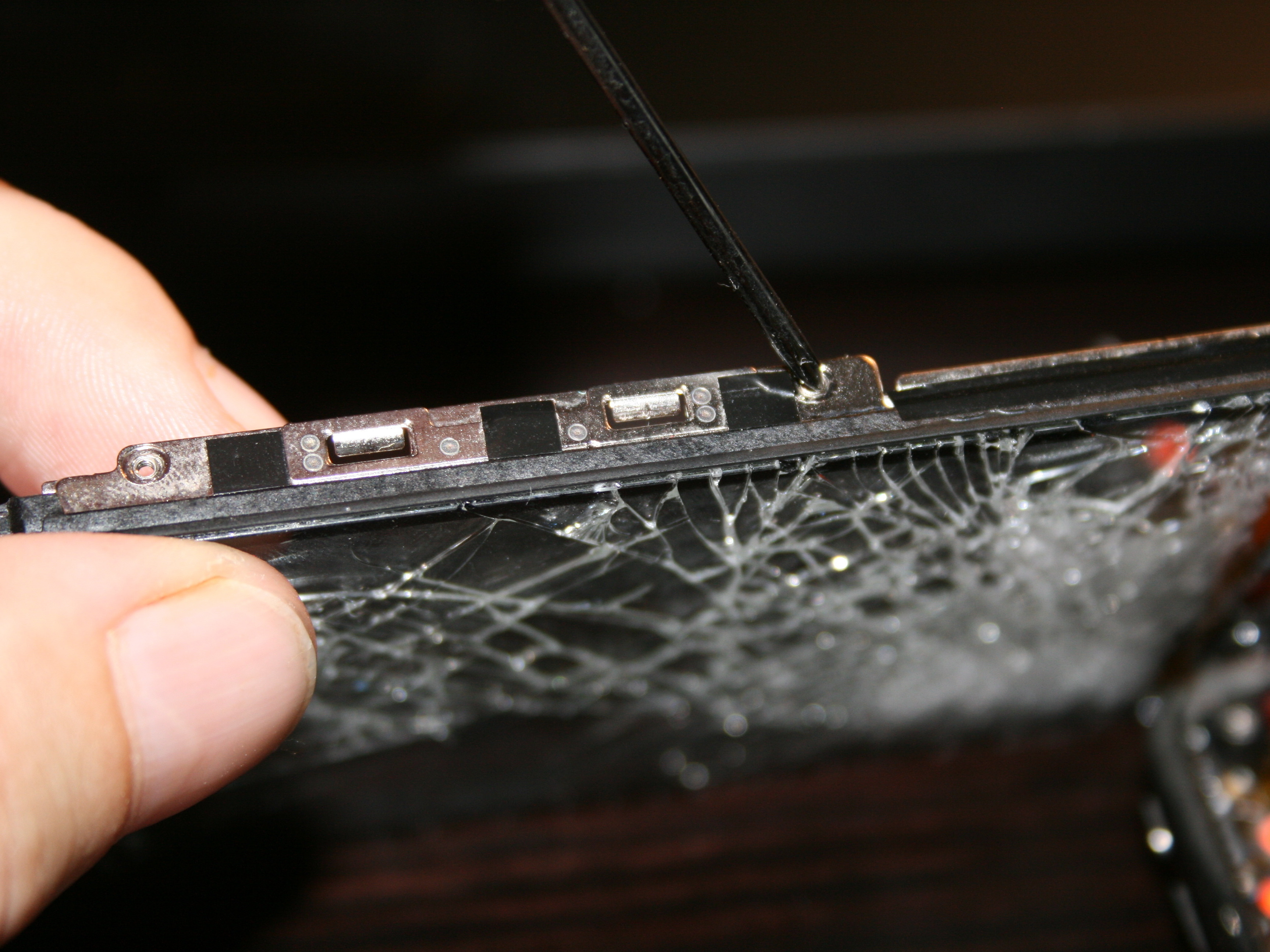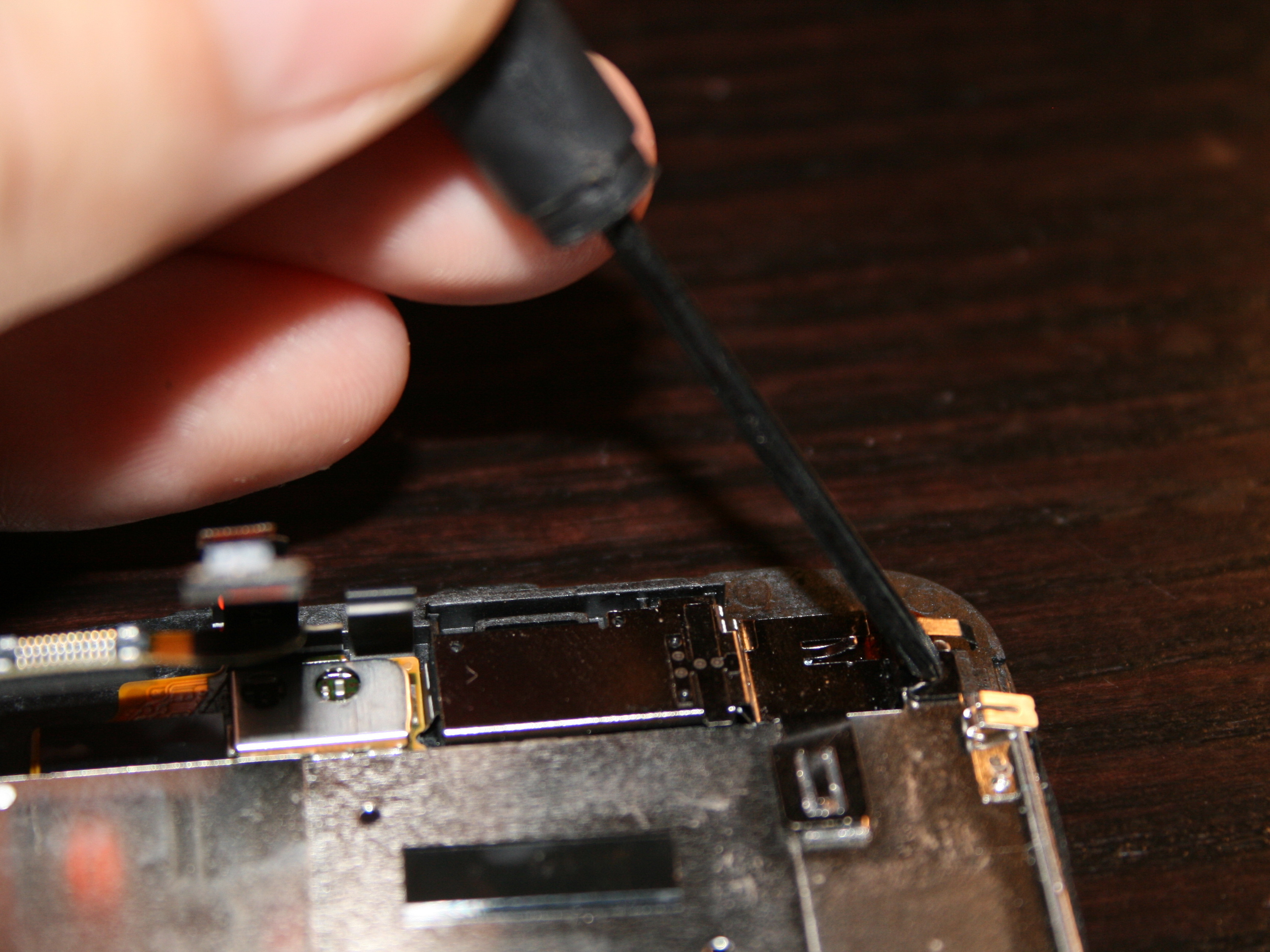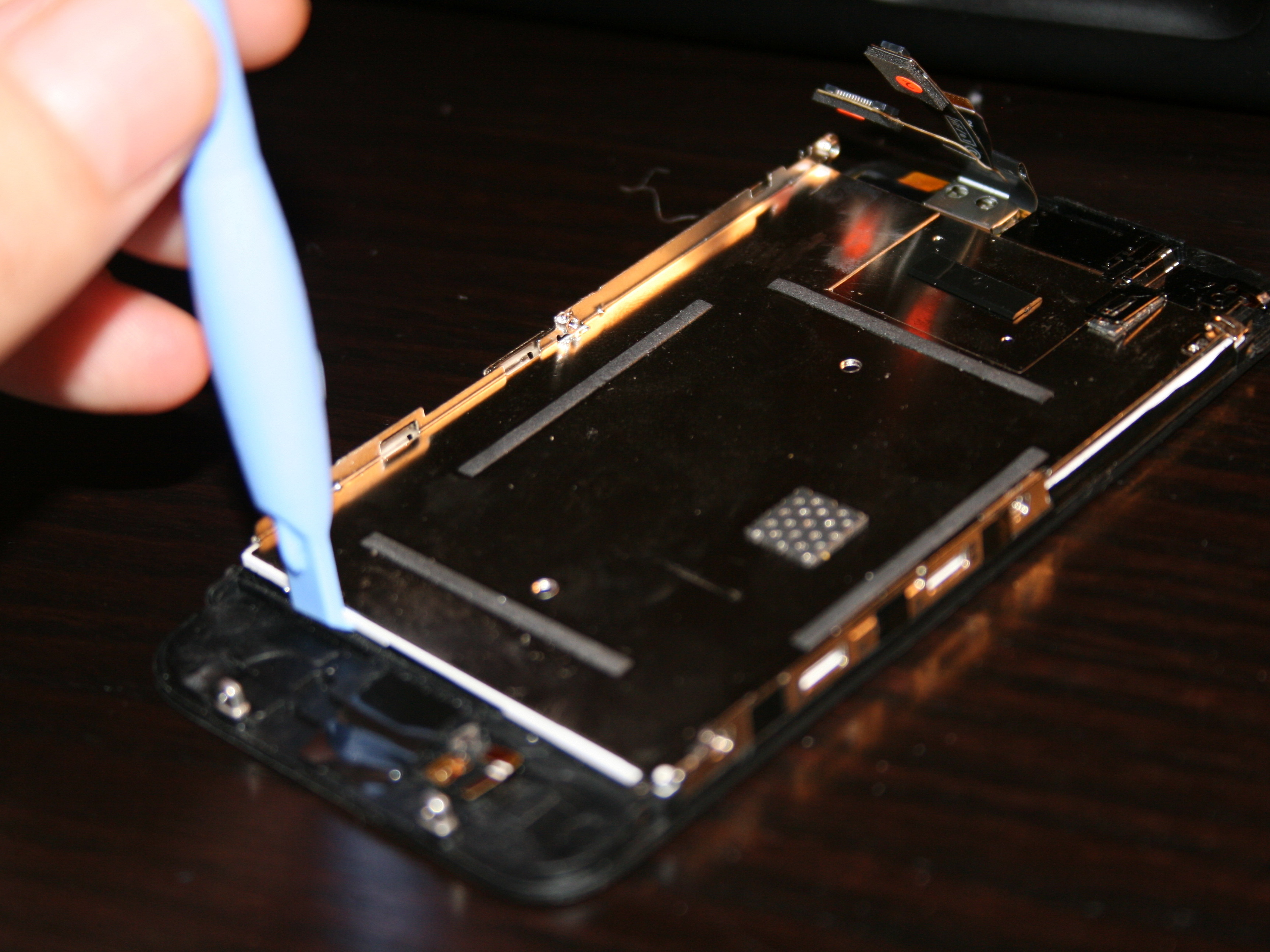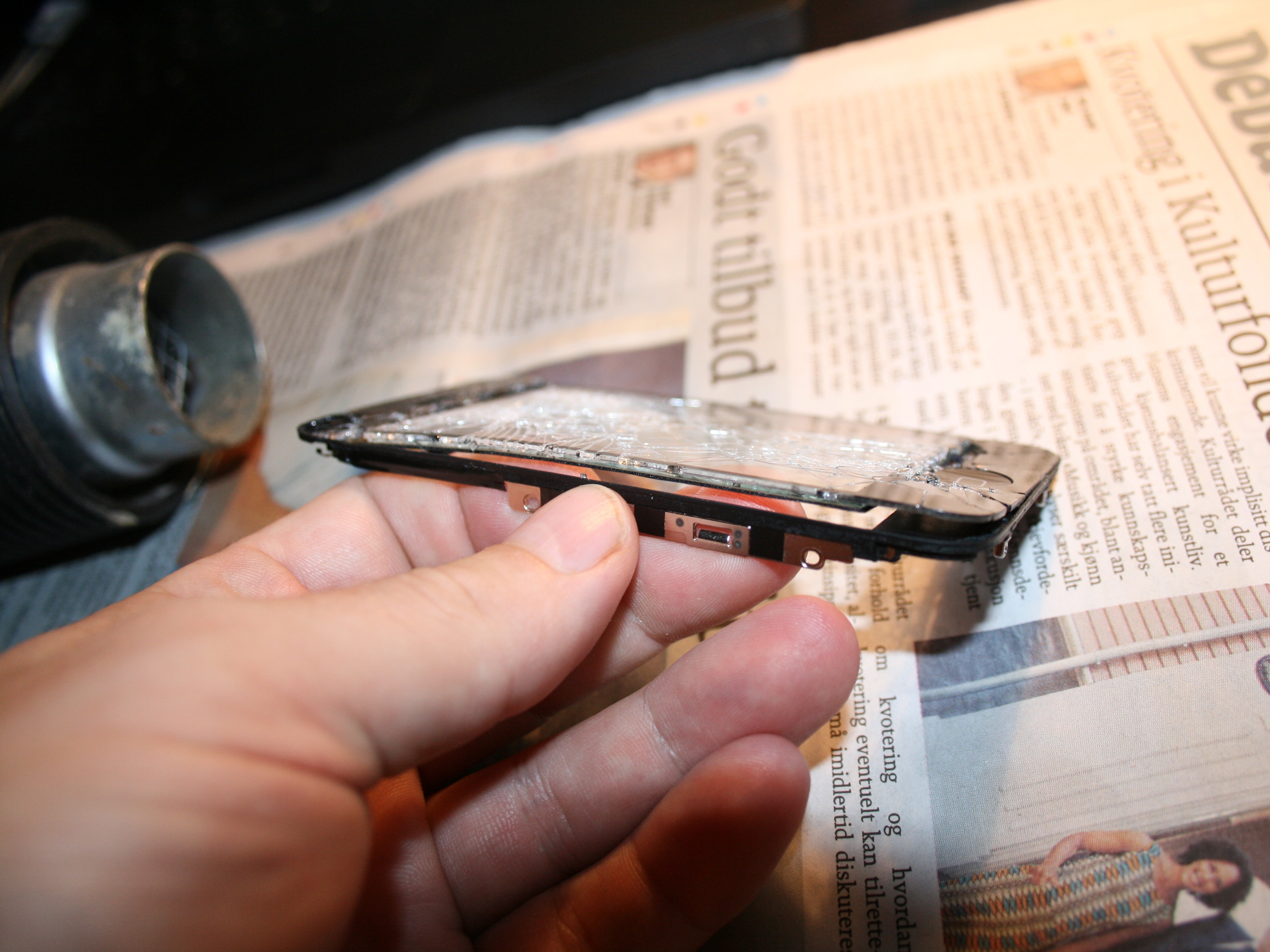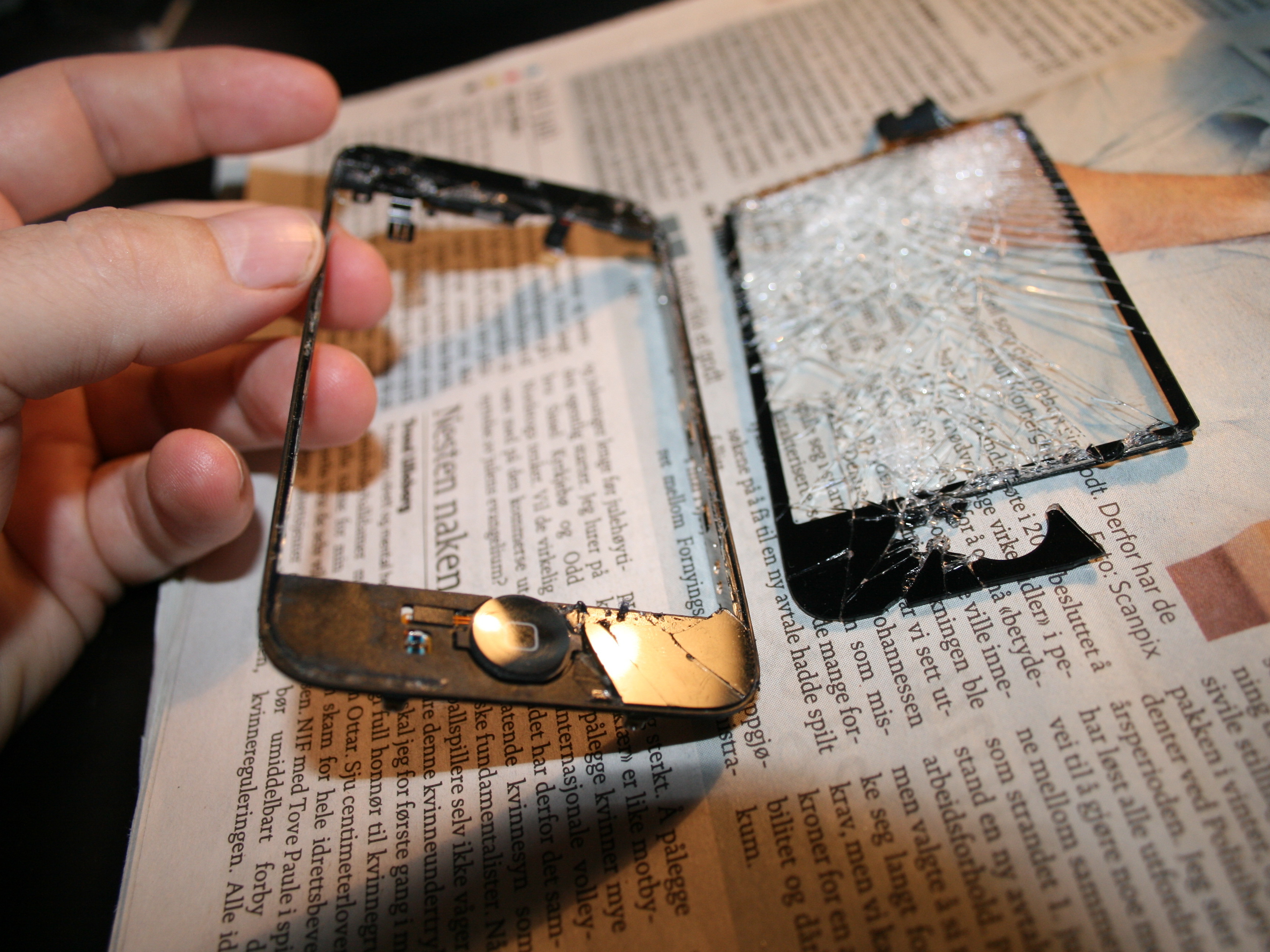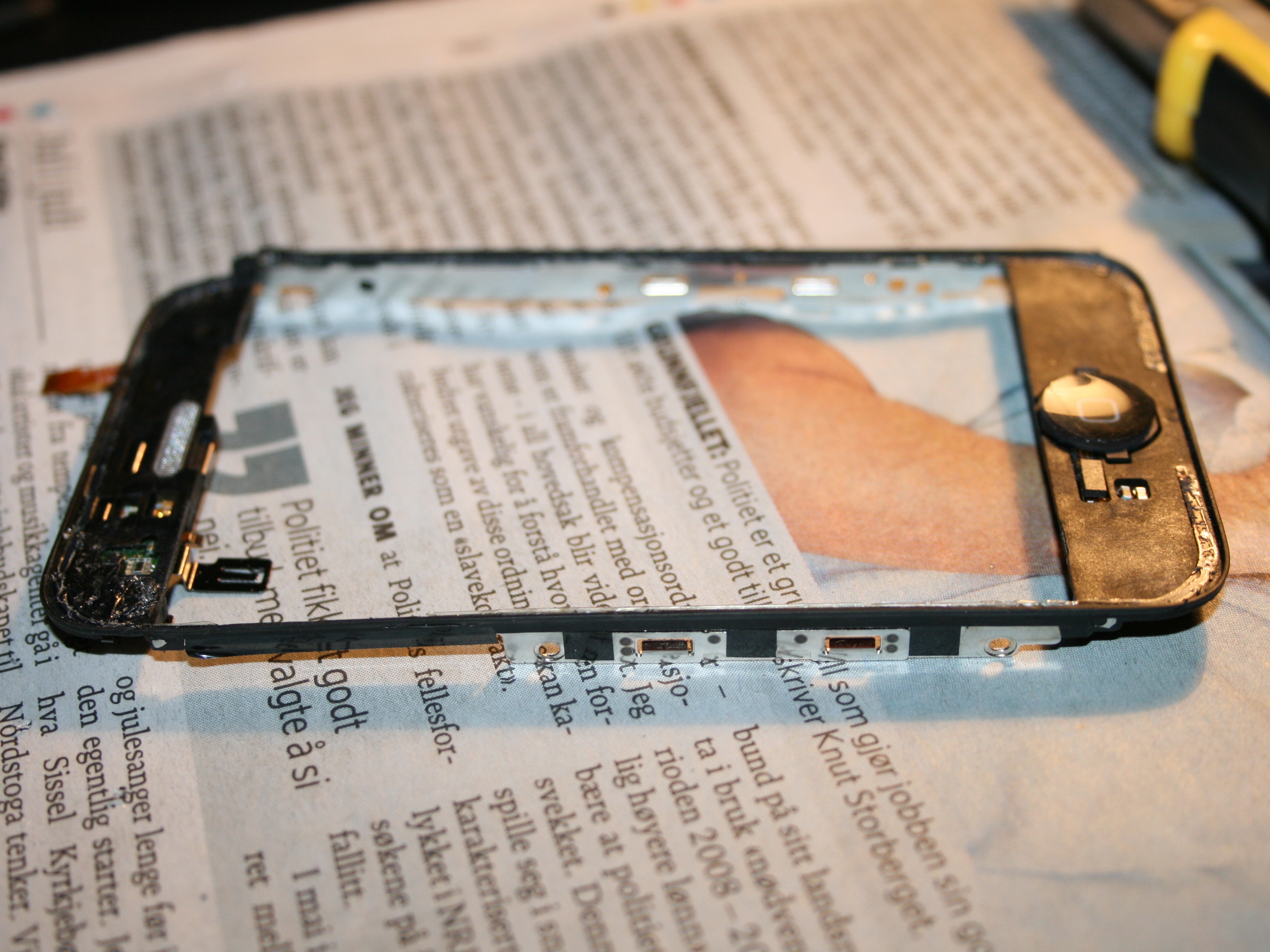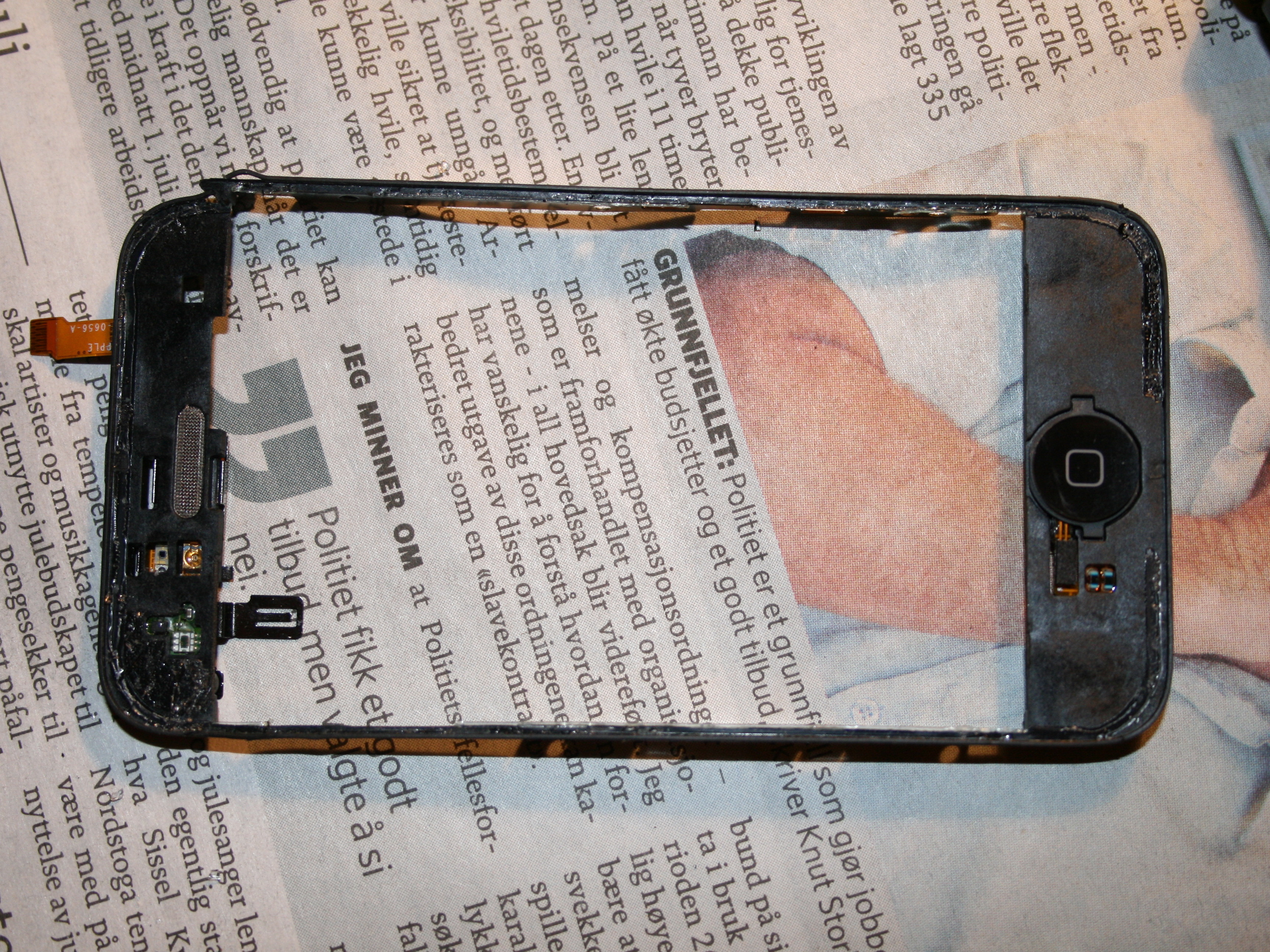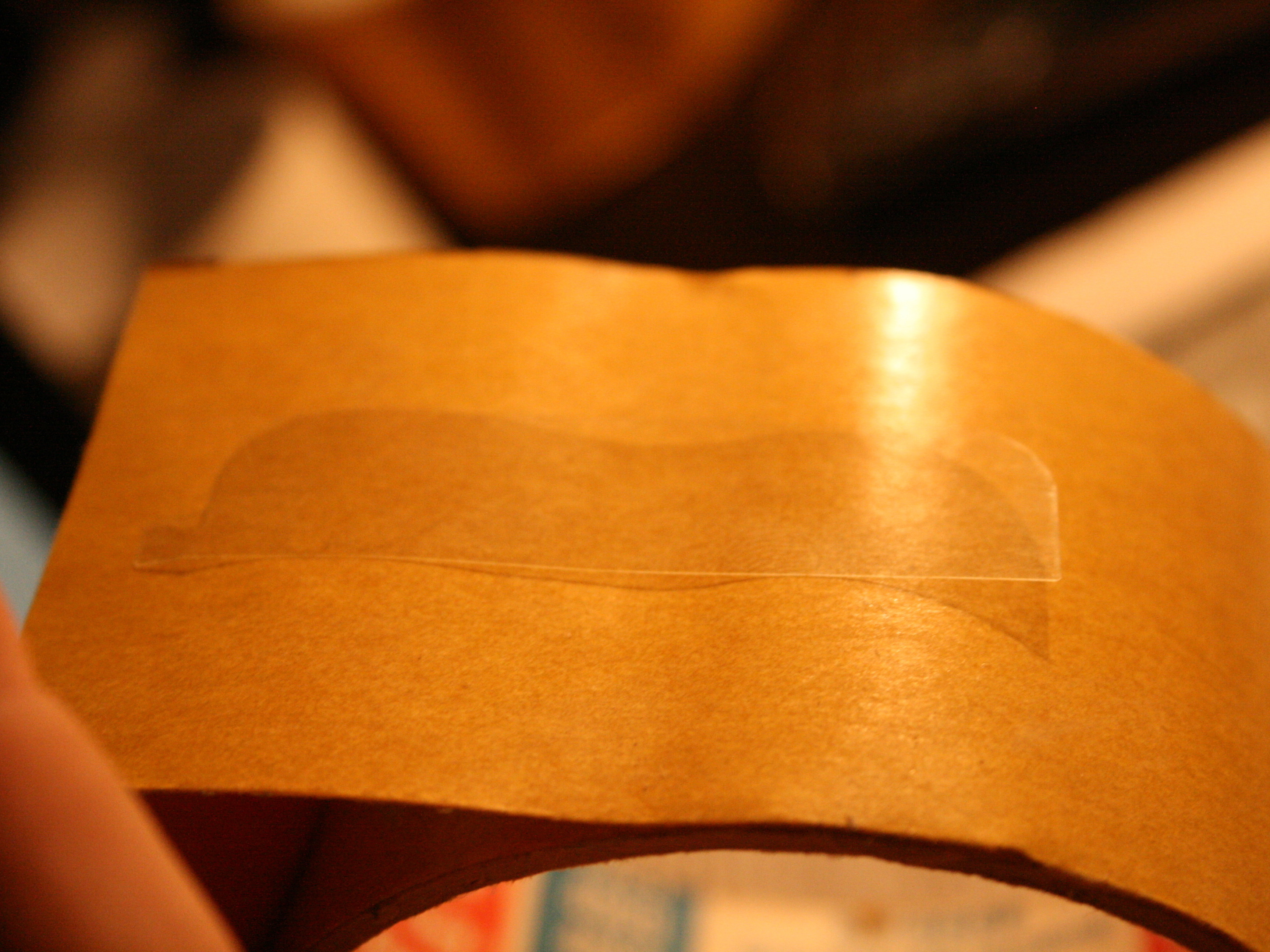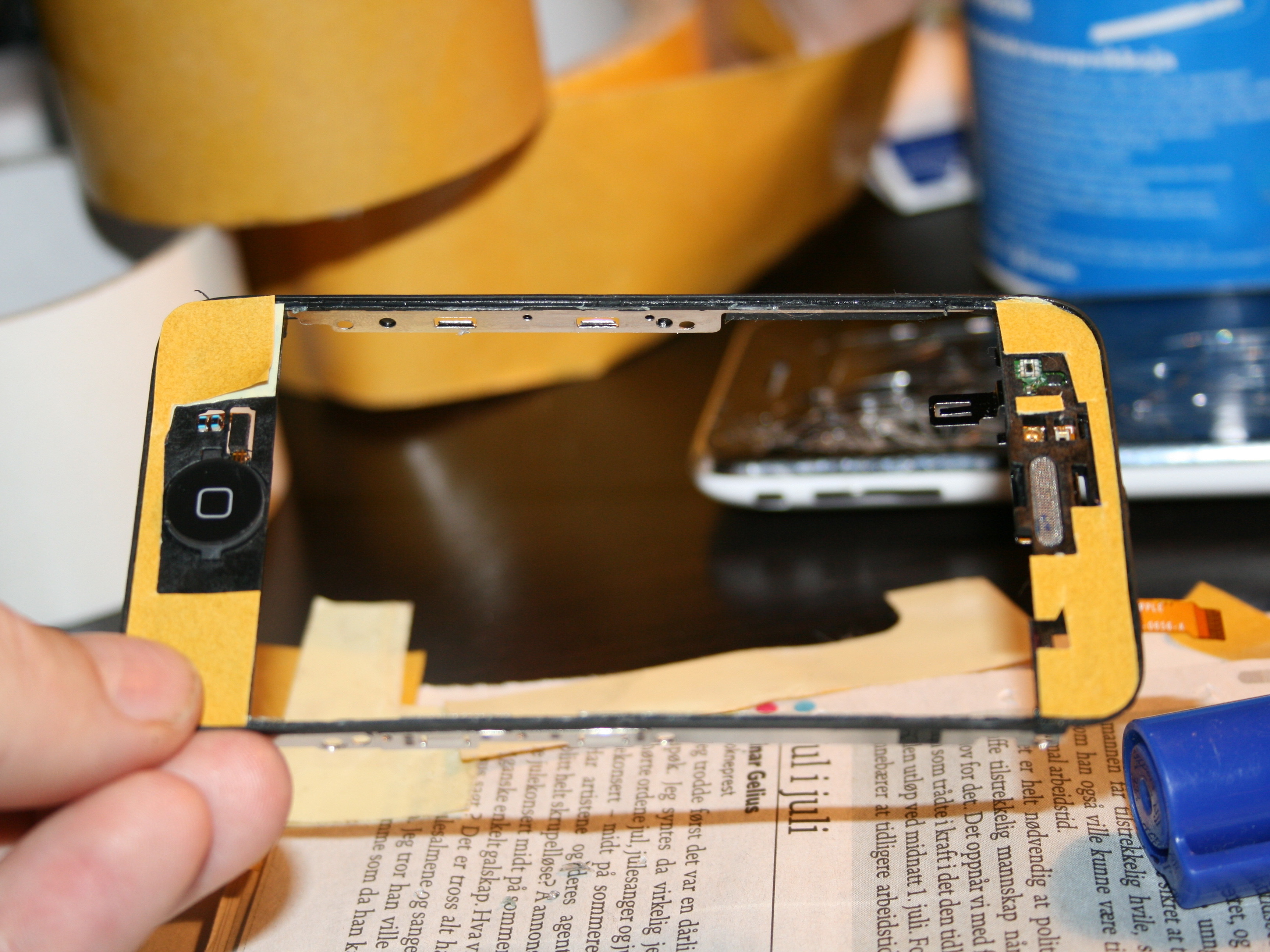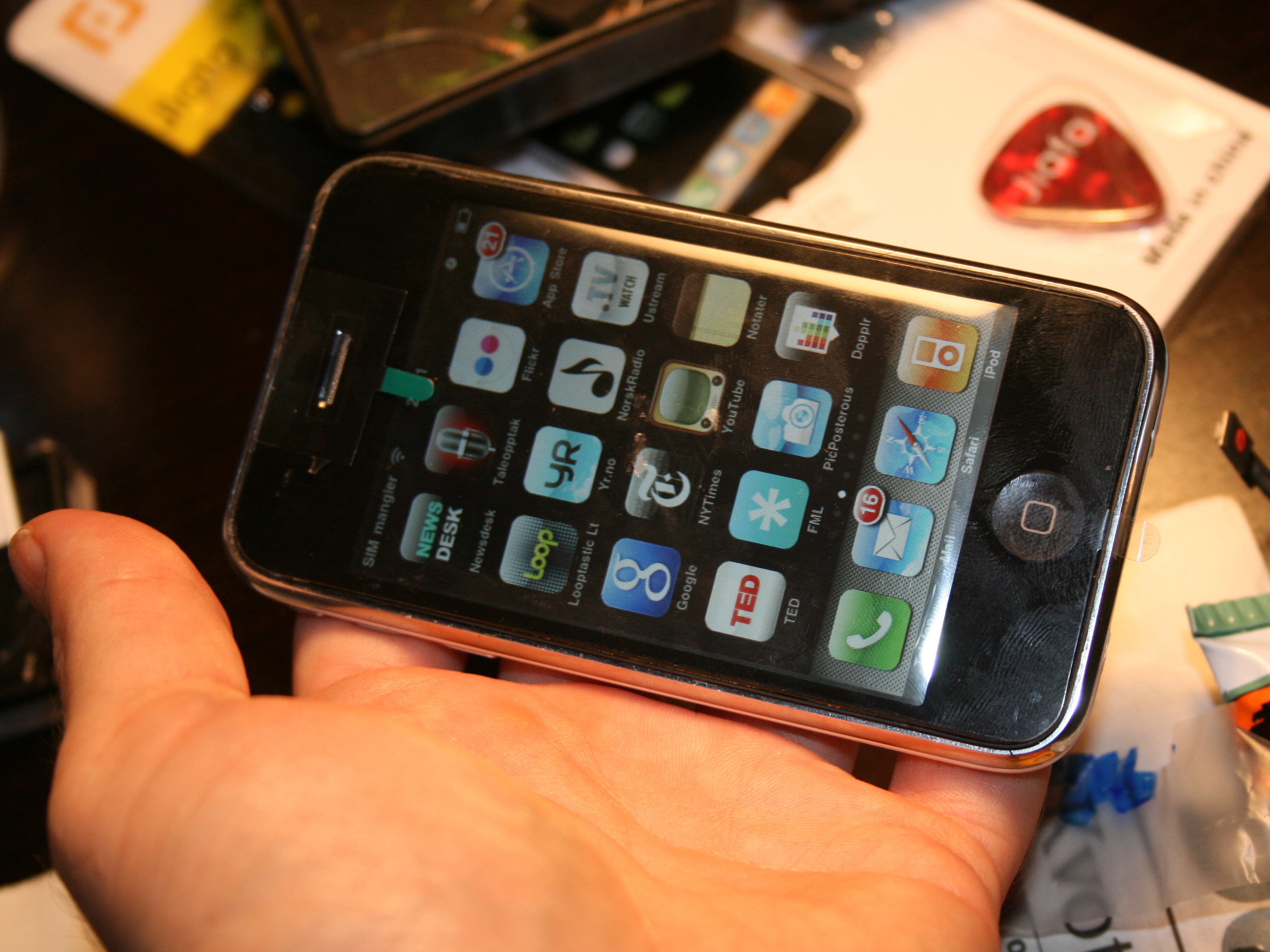Put the tape in place on the frame and press down hard for a while. Then peel away the backing.
Wash your hands or wear gloves to avoid staining the new glass panel, especially on the inside side. Remove any protective plastic covering the glass on the inside, but leave the plastic on the front side.
Place the lower part of the panel in the frame, aligning it perfectly with the lower edge of the frame. Carefully lower it down. Make sure the cables connected to the panel don’t get stuck on the tape, and use your fingers to make them go under the frame.
The tape is sticky, but you will be able to move the glass back and forth a bit to adjust its position in the frame. When you are happy with its placement, press it down hard. Then add pressure on one corner at a time, for about 20-30 seconds, allowing the glass to fasten. You want the glass as deep into the frame as possible. I felt a little lazy and didn’t do this step properly, so my new glass is raised slightly higher than the original.
Voila, the hard part is done! Now it’s time to reassemble the iPhone.


